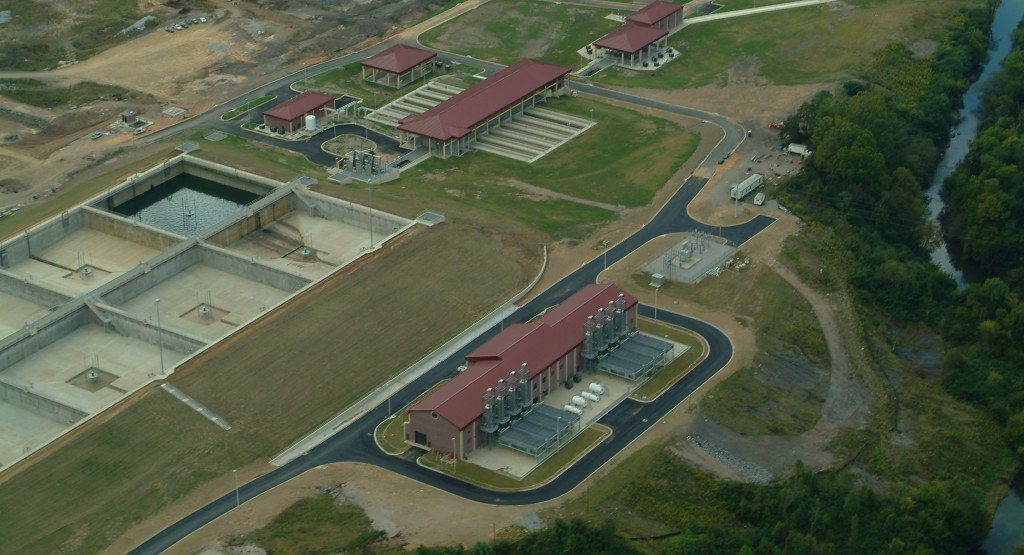
Valley Creek Wastewater Treatment Plant

Valley Creek Wastewater Treatment Plant: Providing Clean Water for the Community
In today’s modern world, the importance of proper wastewater treatment cannot be understated. As our population continues to grow and industrialization expands, the need for effective wastewater treatment facilities becomes increasingly critical. One such facility that plays a significant role in ensuring clean water for the community is the Valley Creek Wastewater Treatment Plant located in St. Paul, Minnesota.
Valley Creek Wastewater Treatment Plant is operated by the Metropolitan Council Environmental Services (MCES), which is a regional authority responsible for wastewater treatment in the Minneapolis-St. Paul metropolitan area. The plant serves a population of over 600,000 people in the southeastern part of the Twin Cities metro area, including the cities of Cottage Grove, Woodbury, Lake Elmo, Afton, and portions of St. Paul.
The plant treats an average of 55 million gallons of wastewater per day, making it one of the largest treatment plants in the region. The treatment process at Valley Creek Wastewater Treatment Plant involves several stages that work together to remove pollutants and contaminants from the wastewater before it is released back into the environment.
The first stage of the treatment process at Valley Creek Wastewater Treatment Plant is the Primary Treatment, which involves removing large objects and solids from the wastewater. This is done through a series of screens and settling tanks where the wastewater is allowed to settle, and the solids are removed. This process helps to reduce the amount of organic matter and debris in the wastewater before it moves on to the next stage of treatment.
After the primary treatment, the wastewater is sent to the Secondary Treatment stage, where biological processes are used to further remove contaminants from the wastewater. This stage of treatment involves the use of bacteria and other microorganisms to break down organic matter in the wastewater. The microorganisms consume the organic matter as food and release enzymes that help to break down the pollutants. This process helps to reduce the levels of nitrogen and phosphorus in the wastewater, which are harmful nutrients that can cause algal blooms and other water quality issues.
The final stage of treatment at Valley Creek Wastewater Treatment Plant is the Tertiary Treatment, which involves additional processes to further clean and disinfect the wastewater before it is discharged back into the environment. This stage of treatment may include filtration, disinfection with chlorine or ultraviolet light, and other processes to ensure that the wastewater meets all regulatory standards for discharge.
Environmental Impact
The treatment processes at Valley Creek Wastewater Treatment Plant are designed to protect the local environment and public health by ensuring that the treated wastewater meets all regulatory standards for discharge. By removing pollutants and contaminants from the wastewater, the plant helps to protect water quality in the Mississippi River, which is a vital resource for drinking water, recreation, and wildlife habitat. Additionally, by reusing treated wastewater for irrigation and other purposes, the plant helps to conserve water resources and reduce the demand on freshwater sources.
Community Outreach
Valley Creek Wastewater Treatment Plant is committed to engaging with the community and educating the public about the importance of wastewater treatment. The plant offers tours and educational programs for schools, community groups, and other organizations to learn about the treatment process and how they can help protect water quality. In addition, the plant participates in local events and activities to raise awareness about water conservation and pollution prevention.
Sustainability Initiatives
In recent years, Valley Creek Wastewater Treatment Plant has implemented several sustainability initiatives to reduce its environmental footprint and operate more efficiently. These initiatives include energy conservation measures, such as the installation of energy-efficient lighting and equipment, as well as the use of renewable energy sources, such as solar power. The plant also recycles and reuses water wherever possible to reduce water consumption and minimize waste. By implementing these initiatives, the plant is able to reduce its operating costs and environmental impact while ensuring that it continues to provide clean water for the community.
Conclusion
Valley Creek Wastewater Treatment Plant plays a crucial role in protecting water quality and public health in the Twin Cities metro area. Through its advanced treatment processes, environmental initiatives, and community outreach efforts, the plant is able to provide clean and safe water for the growing population it serves. As the demand for wastewater treatment continues to increase, facilities like Valley Creek Wastewater Treatment Plant will be essential in ensuring a sustainable and healthy future for our communities.
References:
1. Metropolitan Council Environmental Services. (n.d.). Valley Creek Wastewater Treatment Plant. Retrieved from https://metrocouncil.org/Wastewater-Water/Projects/VPPValley-Worthington/Valley-Creek-Plant.aspx
2. Environmental Protection Agency. (2021, March 8). Wastewater Treatment. Retrieved from https://www.epa.gov/wastewater-treatment
3. Minnesota Pollution Control Agency. (n.d.). Water Quality Standards. Retrieved from https://www.pca.state.mn.us/water/water-quality-standards